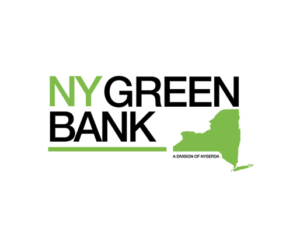
The NY Green Bank recently submitted its 2016 Business Plan which showcased a strong year of performance and plan for the future.
Taken together, NY Green Bank’s closed transactions are estimated to have increased renewable energy capacity by 128MW and saved up to 1 million MWh of electricity from efficiency measures. NY Green Bank’s current portfolio of projects is expected to reduce greenhouse gas emissions by up to 2.9 million metric tons—equivalent to removing more than 37,000 cars from the road for 17 years. The Green Bank has approximately $500 million in its active pipeline, with an additional $121 million in closed deals. As we reported last week, NY Green Bank recently closed a $25 million financing deal with solar provider Sunrun.
Looking forward, the Plan lays out three objectives for the next year:
- Put ratepayer money to work, prudently: Commit $200 million to NY Green Bank investments over the next year, equating to an average of $50 million in closed transactions per quarter.
- Mobilize private capital: Achieve an average, portfolio-wide mobilization ratio of at least 3:1, driving towards a ratio of 8:1 across all NY Green Bank investments by 2025.
- Drive toward self-sustainability: Continue to grow revenues and manage costs to reach self-sufficiency in 2018.
On the drive towards self-sufficiency, NY Green Bank provided data that put it squarely on this trajectory. In the past year, the Green Bank’s revenues more than doubled while expenses grew only 40%. A significant benefit of all Green Banks is that their funding is preserved and repaid over time. This means lower costs for taxpayers, and efficient use of government funds.
That being said, Green Banks should be viewed as a complement to, not a replacement for, other public energy programs. In its Plan, NY Green Bank says it will continue to “take leadership roles in establishing financing approaches and solutions” for other energy programs and objectives in New York State. NY Green Bank gives examples of potential partnership opportunities with NY Prize microgrid program, the State’s community solar initiatives, and businesses providing services to low- and moderate-income customers. This approach fits with the role that Green Banks play in geographies around the country: not only developing new projects and driving scale, but also performing market development and customer engagement activities that remove barriers to existing programs across the state. For example, The Connecticut Green Bank conducted outreach to customers and contractors to help build demand for residential retrofits in the State’s Smart-E program, connecting consumers with both financing and available rebates.
Congratulations to the NY Green Bank team on an impressive year—we’re looking forward to seeing what’s next for New York and Green Banks around the country!